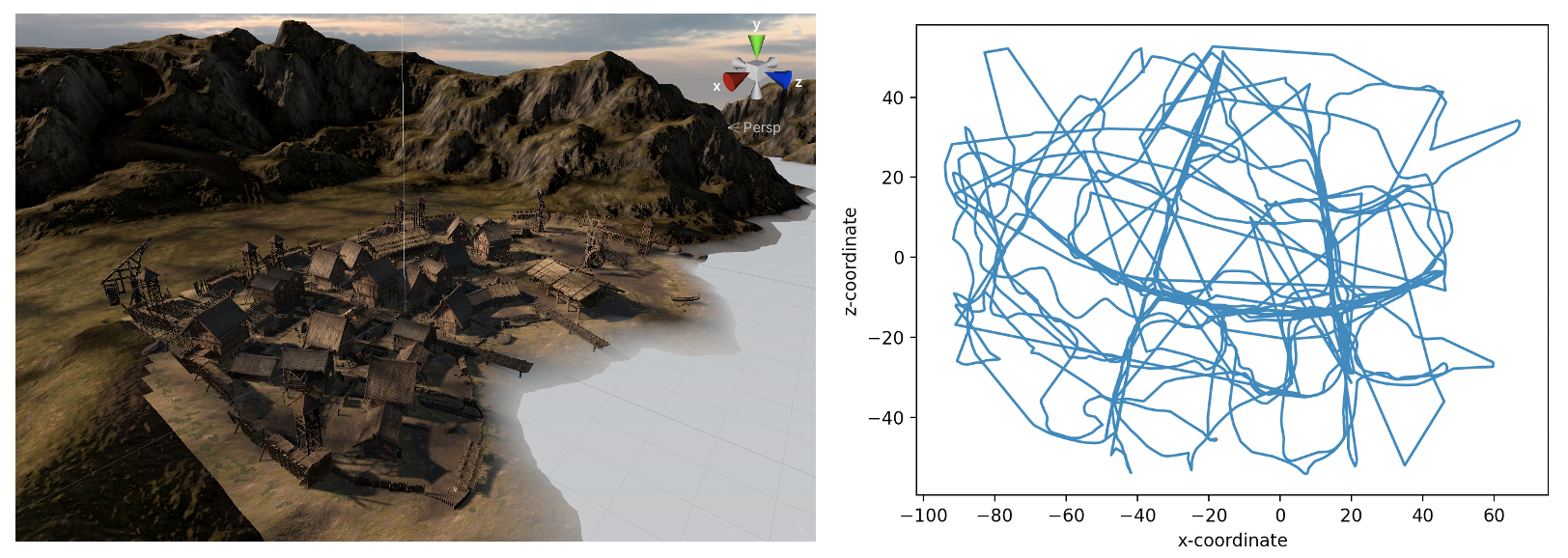User Movement Characterization in VR Systems
Context and Problem
Knowledge about characteristics of user movements in virtual reality (VR) systems is crucial in addressing issues that these systems are known to cause such as nausea. However, despite the increasing number of VR applications for diverse electronic devices, there have not been many user movement data collected from them.
Collecting User Movement Data in VR Games
My research mentor, Ying Chen, at Duke's Intelligent Interactive Internet of Things (I3T) lab and I designed three desktop VR games, using packages from the Unity store, where users can explore different VR scenes using the arrow keys for translational movement and the mouse for viewpoint movement. An aerial view of one of the games we used is shown on the left in the figure below.

We also added a script to each game that collects users' coordinate and viewpoint orientation
data for each frame in the VR games. When plotted, users' trajectories collected in a game look like the
image on the right in the figure above.
Using these games, we obtained movement data from 15+ users collected over 240 minutes.
Example entries of data collected from one game, all of which are saved in one text file per one user
appears as in the screenshot below. x, y, and z represent the user's coordinate in the game and
alpha, beta, and gamma represent the user's viewpoint orientation.
One line in the text file corresponds to the user's coordinate and viewpoint orientation
at a particular time stamp:

Conclusion
As a result of this project, we produced statistical models for user position and orientation in VR systems,
which, to our best knowledge, is the first one to characterize user movements in VR systems in
various electronic devices, including a desktop computer.
We reported our discoveries and datasets in a conference paper,
VR Viewport Pose Model for Quantifying and Exploiting Frame Correlations,
which was presented at the IEEE INFOCOM in 2022.
While interacting users with different levels of exposure to VR technologies
in the data collection process,
I appreciated receiving their feedback and hearing their opinions about VR technologies.
This project inspired me to make cutting-edge technologies accessible to diverse groups of people,
including those that have never had any previous interactions with them.